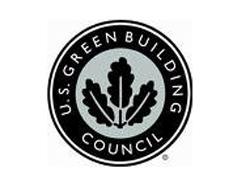USGBC's Green Schools Program Gains Interest
Washington, DC, April 22, 2008-- One school a day is registering for the U.S. Green Building Council's (USGBC) LEED certification program for green schools, signaling their intent to build and operate schools that are more energy and water efficient, which will save taxpayers money.
Green schools also have significantly improved indoor air quality, and that results in healthier kids.
"When you consider the fact that 50 million young people spend 8 hours a school day in a school building, we should do everything we can to make that environment work for them, not against them. Parents, teachers and school board officials understand better than anyone the link between child health and learning; and the fact is that children in green schools have fewer sick days and better test scores," said Michelle Moore, senior vice president, USGBC.
"And if these reasons aren't compelling enough to go green," Moore continued, "the operational cost savings should be. If you do the math, energy savings alone could pay for 5,000 new textbooks per school per year."
Moore said that there are about 100,000 public and private schools in the U.S., and that fully one-third of their facility costs are in heating/cooling buildings, providing water, electricity, and other energy/utility functions.
LEED buildings have a demonstrated track record for lowering energy use by up to 40 percent and reducing water use by up to 50 percent over conventional buildings, Moore said.
Pennsylvania, Michigan, New Jersey, Oregon and Virginia have the most LEED certified schools to date, and many local school districts and state departments of education are beginning to develop and implement policies that require schools to be built green.
The State of Ohio has adopted the LEED for Schools Rating System as part of its school design standards. When the state did the math, it determined it could save $1,415,529,914 in taxpayer money over the next 40 years by reducing the energy consumption of school buildings.
USGBC's local chapter network is helping replicate Ohio's strategy in communities in all 50 states.
The newly-formed Green Schools Caucus in the U.S. House of Representatives has lent a federal voice to the green schools agenda.
